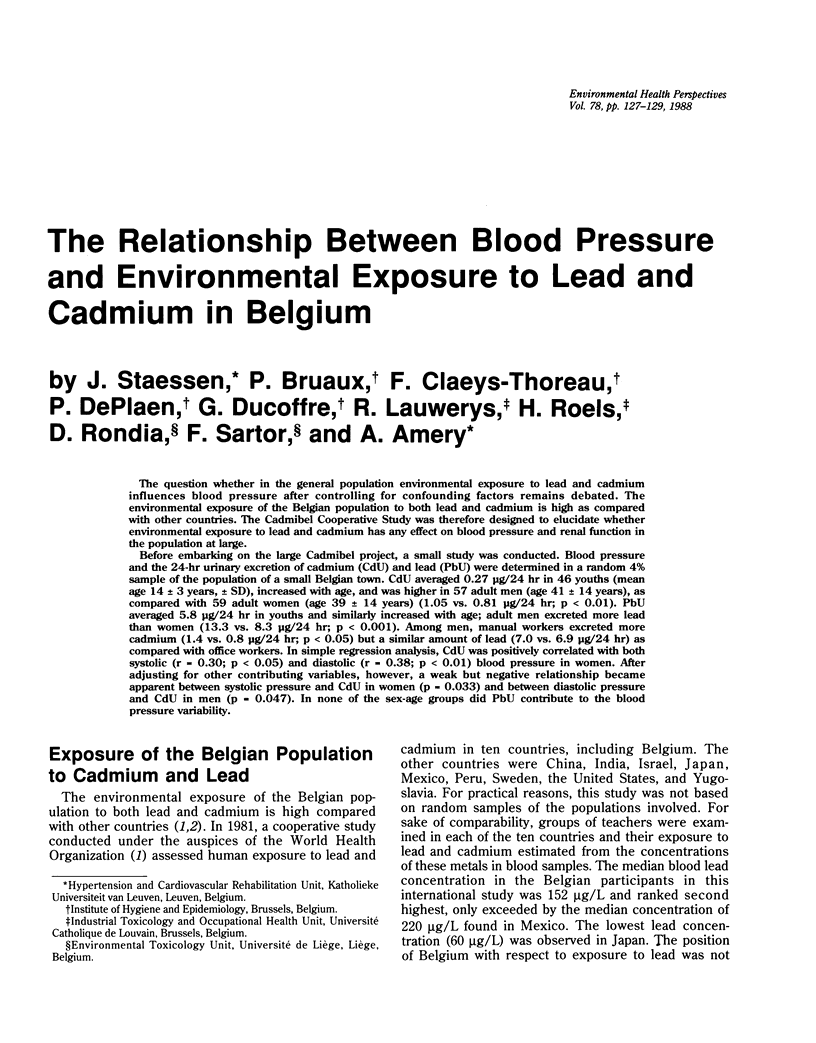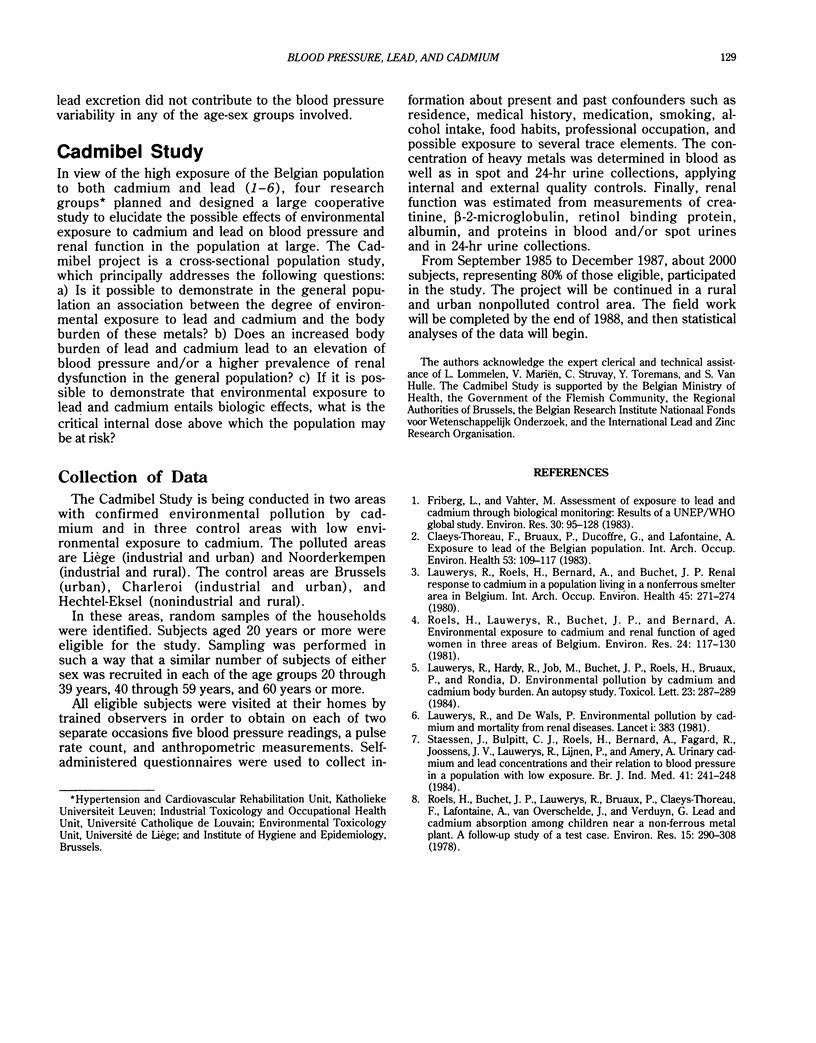Abstract
The question whether in the general population environmental exposure to lead and cadmium influences blood pressure after controlling for confounding factors remains debated. The environmental exposure of the Belgian population to both lead and cadmium is high as compared with other countries. The Cadmibel Cooperative Study was therefore designed to elucidate whether environmental exposure to lead and cadmium has any effect on blood pressure and renal function in the population at large. Before embarking on the large Cadmibel project, a small study was conducted. Blood pressure and the 24-hr urinary excretion of cadmium (CdU) and lead (PbU) were determined in a random 4% sample of the population of a small Belgian town. CdU averaged 0.27 micrograms/24 hr in 46 youths (mean age 14 +/- 3 years, +/- SD), increased with age, and was higher in 57 adult men (age 41 +/- 14 years), as compared with 59 adult women (age 39 +/- 14 years) (1.05 vs. 0.81 micrograms/24 hr; p less than 0.01). PbU averaged 5.8 micrograms/24 hr in youths and similarly increased with age; adult men excreted more lead than women (13.3 vs. 8.3 micrograms/24 hr; p less than 0.001). Among men, manual workers excreted more cadmium (1.4 vs. 0.8 micrograms/24 hr; p less than 0.05) but a similar amount of lead (7.0 vs. 6.9 micrograms/24 hr) as compared with office workers. In simple regression analysis, CdU was positively correlated with both systolic (r = 0.30; p less than 0.05) and diastolic (r = 0.38; p less than 0.01) blood pressure in women.(ABSTRACT TRUNCATED AT 250 WORDS)
Full text
PDF


Selected References
These references are in PubMed. This may not be the complete list of references from this article.
- Claeys-Thoreau F., Bruaux P., Ducoffre G., Lafontaine A. Exposure to lead of the Belgian population. Int Arch Occup Environ Health. 1983;53(2):109–117. doi: 10.1007/BF00378423. [DOI] [PubMed] [Google Scholar]
- Friberg L., Vahter M. Assessment of exposure to lead and cadmium through biological monitoring: results of a UNEP/WHO global study. Environ Res. 1983 Feb;30(1):95–128. doi: 10.1016/0013-9351(83)90171-8. [DOI] [PubMed] [Google Scholar]
- Lauwerys R., Hardy R., Job M., Buchet J. P., Roels H., Bruaux P., Rondia D. Environmental pollution by cadmium and cadmium body burden: an autopsy study. Toxicol Lett. 1984 Dec;23(3):287–289. doi: 10.1016/0378-4274(84)90023-7. [DOI] [PubMed] [Google Scholar]
- Lauwerys R., Roels H., Bernard A., Buchet J. P. Renal response to cadmium in a population living in a nonferrous smelter area in Belgium. Int Arch Occup Environ Health. 1980;45(3):271–274. doi: 10.1007/BF00380790. [DOI] [PubMed] [Google Scholar]
- Roels H. A., Buchet J. P., Lauwerys R., Bruaux P., Claeys-Thoreau F., Lafontaine A., van Overschelde J., Verduyn G. Lead and cadmium absorption among children near a nonferrous metal plant: a follow-up study of a test case. Environ Res. 1978 Apr;15(2):290–308. doi: 10.1016/0013-9351(78)90105-6. [DOI] [PubMed] [Google Scholar]
- Roels H. A., Lauwerys R. R., Buchet J. P., Bernard A. Environmental exposure to cadmium and renal function of aged women in three areas of Belgium. Environ Res. 1981 Feb;24(1):117–130. doi: 10.1016/0013-9351(81)90138-9. [DOI] [PubMed] [Google Scholar]
- Staessen J., Bulpitt C. J., Roels H., Bernard A., Fagard R., Joossens J. V., Lauwerys R., Lijnen P., Amery A. Urinary cadmium and lead concentrations and their relation to blood pressure in a population with low exposure. Br J Ind Med. 1984 May;41(2):241–248. doi: 10.1136/oem.41.2.241. [DOI] [PMC free article] [PubMed] [Google Scholar]


